1/18/2022 Skiing the Great Basin
Aside from the increasingly popular Terminal Cancer Couloir, most skiers blow through interior Nevada on I-80 as they make their way between popular, congested ski meccas - the Wasatch and Lake Tahoe. However, the joke is on them. Reno-based skier Conor Phelan knows what’s really out there and is on a mission to ski a list of 64 prominent peaks in the Great Basin. As you can imagine, this project comes with minimal beta, hard-to-predict conditions, and long approaches. But on the other hand, it’s almost guaranteed solitude, a chance to truly explore new areas, and get creative.
When we heard of Conor’s project, we couldn’t help but want to learn more.
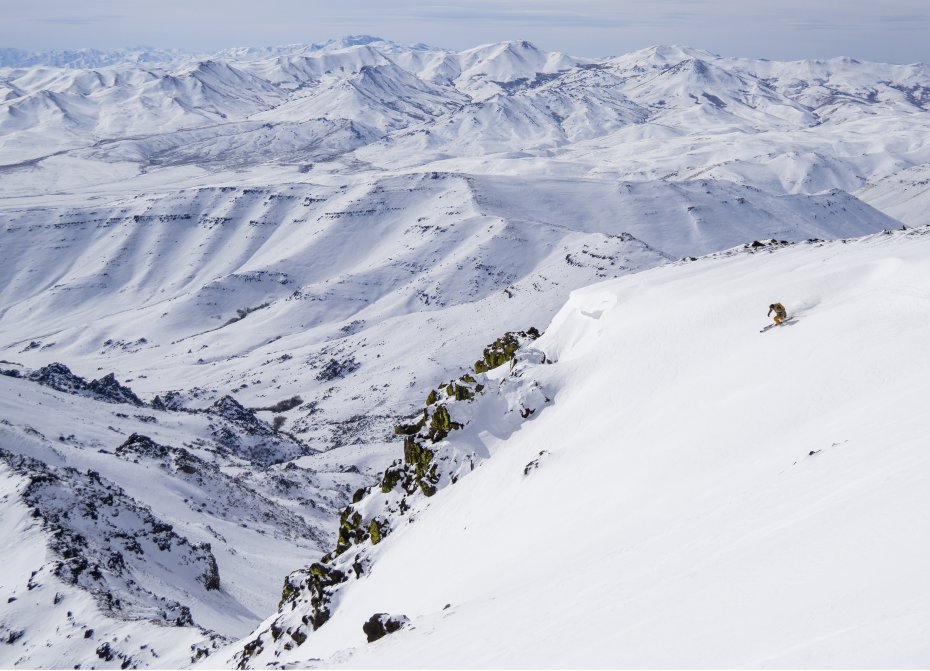
What is the Skiing the Basin Project and why? Also, for those who don’t know, what is the Great Basin?
The Great Basin is a fascinating hydrologic feature known as an endorheic basin. This means that all the water that falls as rain or snow across this area does not end up flowing to any ocean; instead, all the water flows to internal lakes, swamps, playas, etc. where it evaporates over time. The Great Basin in particular is the largest endorheic basin in North America and is typified by the dichotomous Basin & Range geography – wide flat valleys punctuated by island mountain ranges.
The Skiing the Basin Project is a goal of mine to ski every peak within Nevada that has over 3,000’ of prominence. I chose prominence to clearly delineate the scope of the effort as it is a quantifiable measure of a mountain’s relief. Specifically, it is the difference in elevation between the top of a peak and the lowest contour that does not contain a higher point. The Great Basin topography lends itself to highly prominent peaks and using prominence helps discretely identify a set of objectives.
I think it is important to point out that Skiing the Basin is my interpretation of ski touring in Nevada, and I recognize that there have been many before me that have pioneered ski lines out in the great wide open.
What is your background and where do you currently live?
I grew up outside of Rochester, NY between Lake Ontario and the Finger Lakes. In middle school, I joined the cross-country and track teams and ran competitively all the way through college. That endurance foundation I built over a decade of running was a huge component of my interest in - and enjoyment of - backcountry ski touring more recently. My wife, Lacey, and I both got our graduate degrees at the University of Montana before settling in Reno, NV where I help conduct forest ecology and silviculture research at the University of Nevada Reno.
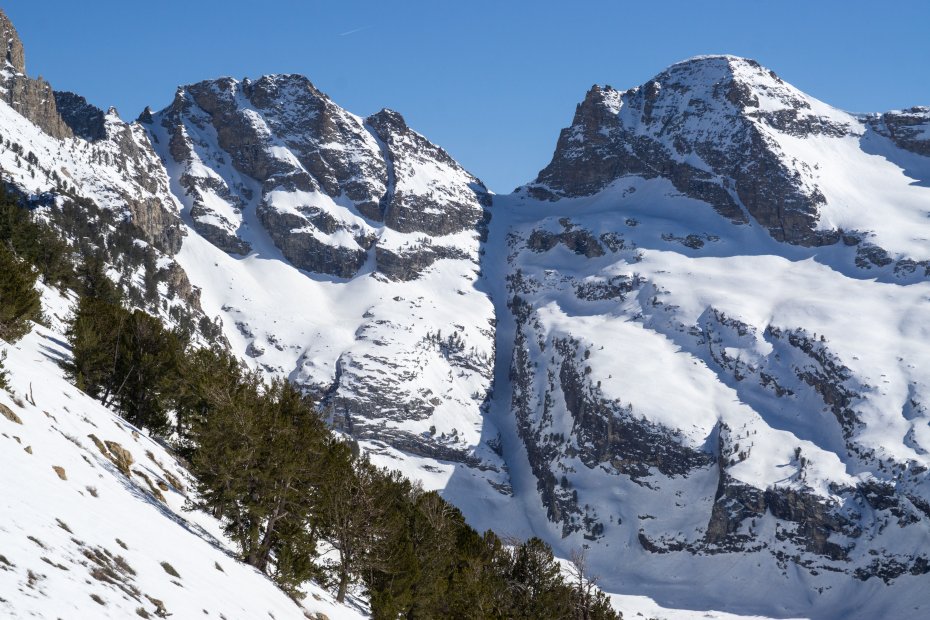
When and where did the idea come from and how has it gone so far?
In 2019, I was traveling north on 580 just south of Reno on my way back from skiing down in the Sierra, when a distant snow-covered peak north of town caught my eye. I did some digging, and it turns out that that mountain is Tule Peak. While I was perusing the Tule Peak summit post page I had to look up the term ‘prominence’ - I had never heard of it before. This led me to a map and list of prominent peaks across Nevada…and then it was off to the races. Really, this project is all about providing some form of structure to force myself to explore corners of the state that I would otherwise overlook.
I am humbled by how well the project has unfolded so far. In large part, I owe this success to my incredibly enthusiastic friends, especially Will Boyer, who are always down to join - even when Tahoe receives a huge powder dump! I think it speaks to the magic of ski touring out in the Basin. Not counting Basin peaks that don’t satisfy the prominence threshold, I have summited and skied 24 of the 64 peaks on the list. So, just over a third of the way through.
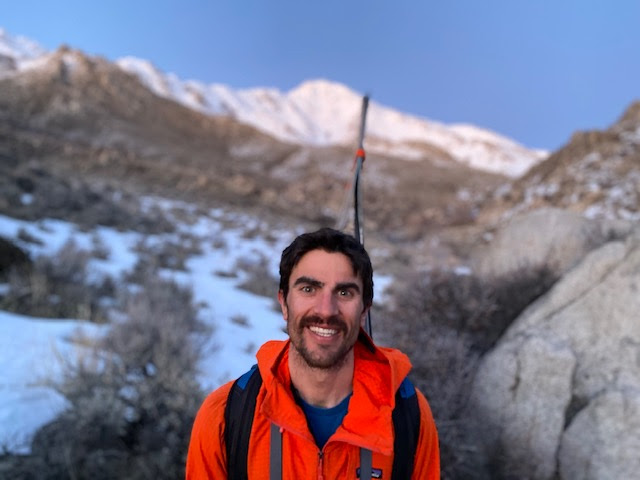
What is one of your favorite memories of the project so far and why?
Oh, tough question, there have been so many great moments out there. This past winter, Will Boyer and I went on a road trip up in Northwest Nevada - some spectacularly remote country. Over three days we successfully summited and skied three of the project peaks, all of which were possible first descents. Standing on top of the final summit of the trip (Orevada View near the Oregon border) it felt like the project was really coming alive. It is hard to describe the blend of liberation and excitement that stems from skiing out in such vast, quiet places with good friends.
What have been some of the biggest challenges of the project?
Perhaps not surprisingly, the almost total lack of information for most of these peaks is the biggest challenge. I would be remiss if I didn’t say thanks to a small cadre of folks trying to hike all the prominent peaks in Nevada. As a result of their efforts, there is a surprising amount of information on various summit post pages. Obviously, skiing them in winter is a whole different beast, and it is the lack of beta itself that I find to be one of the most exciting parts of the process.
Outside of Tahoe, most people probably don’t think of Nevada as a hotspot for skiing. What is your response to that?
I think this relates directly to the last question. There just isn’t any information out there. There is also this persistent notion in the public eye that Nevada is just this endless wasteland. I am guilty of having thought that myself before moving to Reno. To the contrary, Nevada is staggeringly beautiful and full of life. Hopefully, my project can help change the public perception of Nevada’s interior; it is a remarkable place steeped in cultural and physical history. Getting back to your question though, at the end of the day it is a vast area with no avalanche report, little to no specific line beta, and it demands a certain level of self-sufficiency not required of more popular ski regions.
How do you describe backcountry skiing in Nevada and why should folks look to the Great Basin this winter?
Freeing. If you like to follow a set skintrack into a cirque where every nook and cranny has its own name and ski history then Nevada’s Great Basin might not be the place for you. I don’t mean that in any negative way, I completely understand that some folks feel more comfortable and have more fun skiing in places with more knowns than unknowns. Otherwise, I encourage folks to venture out there and see what it is all about. Expect long drives on dirt roads, expect variable weather, expect hiking, and expect to be blown away. I would say that the general response to skiing in the Basin is one of surprise. Whenever I bring Basin newbies out for a tour they are usually shocked by the scale of the terrain, the openness and grandeur of the land, and often the quality of the skiing!
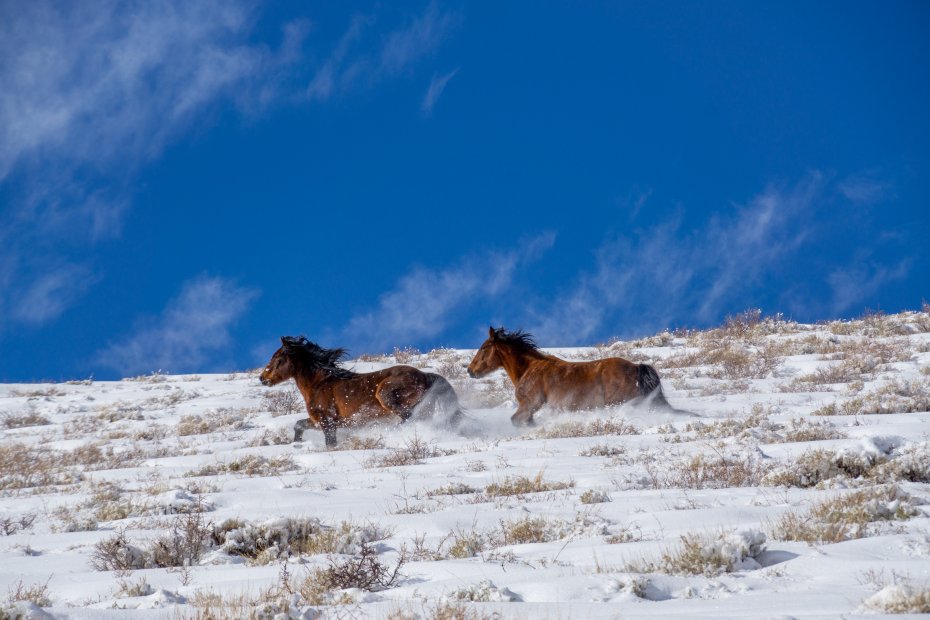
What is the skiing like or does it really depend on the range? i.e. What kind of snowpack (continental, intermountain, maritime)? Windy? Are snow levels an issue? etc.
It would be silly for me to try and describe such a massive area in singular terms. That being said, the unique geography and ecology of the Great Basin does lend itself some interesting skiing attributes. One trait worth mentioning is that the Basin peaks simply don’t require as much snow for a skiable base as more heavily timbered areas like the Wasatch, Rockies, etc. Often, the only ground cover is sagebrush and grasses. A three-foot base can work wonders!
The snowpack also varies widely but can be somewhat patterned based on where the storms are coming from. For example, this past winter (20/21) the northern half of Nevada saw several storms that slid in from the northwest and dumped snow on their way towards Utah. The magical champagne snow that everyone craves in the Wasatch? Well, it first fell as desert pow out in the Basin. In this instance, the Basin snowpack mirrored what people were seeing in the interior. Those same early-season basal facets that plagued much of the southern Rockies were found throughout Nevada. Sometimes though, huge Sierra storms hit the Basin with leftover snow and it can end up feeling much more maritime. Every range and every tour deserves its own analysis.
I suppose it can be windy out there, but no more so than I have experienced in the Northern Rockies or the Sierra.
What have been some of your favorite lines of the project so far and why?
Last year we had a great crew out for a road trip down the east side of the East Humboldts and Ruby Mountain ranges. Pearl Peak, the high point of the southern Rubies, has this incredible line down its northeast face with an exciting dogleg couloir at the bottom. An unbeatable ambiance too - the whole time we were up there we were skinning and skiing past thousand-year-old bristlecone pines.
Another notable descent was the East Ramp of King Lear. This mountain rises straight from the Black Rock Desert, so the idea of it ever getting enough skiable snow seemed insane. But, last year we caught it in great form, and skied some very unique desert lines.
My last Basin ski this past season was also one of my favorites. I met up with a buddy from SLC and we skied the three couloirs at the headwaters of Seitz Canyon in the Ruby Mountains. The snow was absolutely perfect, and those lines are just so darn aesthetic.
How do you go about scouting peaks, lines, and snow conditions that presumably have so little beta on them?
I spend a lot of time looking at maps. A lot. It helps that I use, build, and manipulate maps as part of my profession. For every peak on the list, I consider there to be two major puzzles. The first is access, the second is snow.
For the first, I use a combination of CalTopo, OnX, imagery (Google, FatMap, etc), and trip reports from hikers and hunters to determine what roads and trails are legally and reasonably accessible and where I can expect to find good ski terrain. Thankfully, a nice characteristic of the Basin is that if you do have to bushwhack, there often isn’t much to bushwhack through.
For the second problem, I turn to the classic weather tracking sites (NOAA, Windy, etc) and snowpack sites (e.g. NOAA’s interactive snow map) which I use in conjunction with imagery from satellites like Sentinel (check out the Sentinel Playground sometime). From these sources, I can usually determine if a range has enough snow to be skiable (remember, doesn’t always have to be that much). When it comes down to it, you have to go out and see. Sometimes we get turned back by scary snowpack or too little snowpack. But often we find something fun to ride even if the main objective is crossed off for the day.
Basin peaks usually require long(ish) approaches. I figure that might appeal to the Skimo audience.
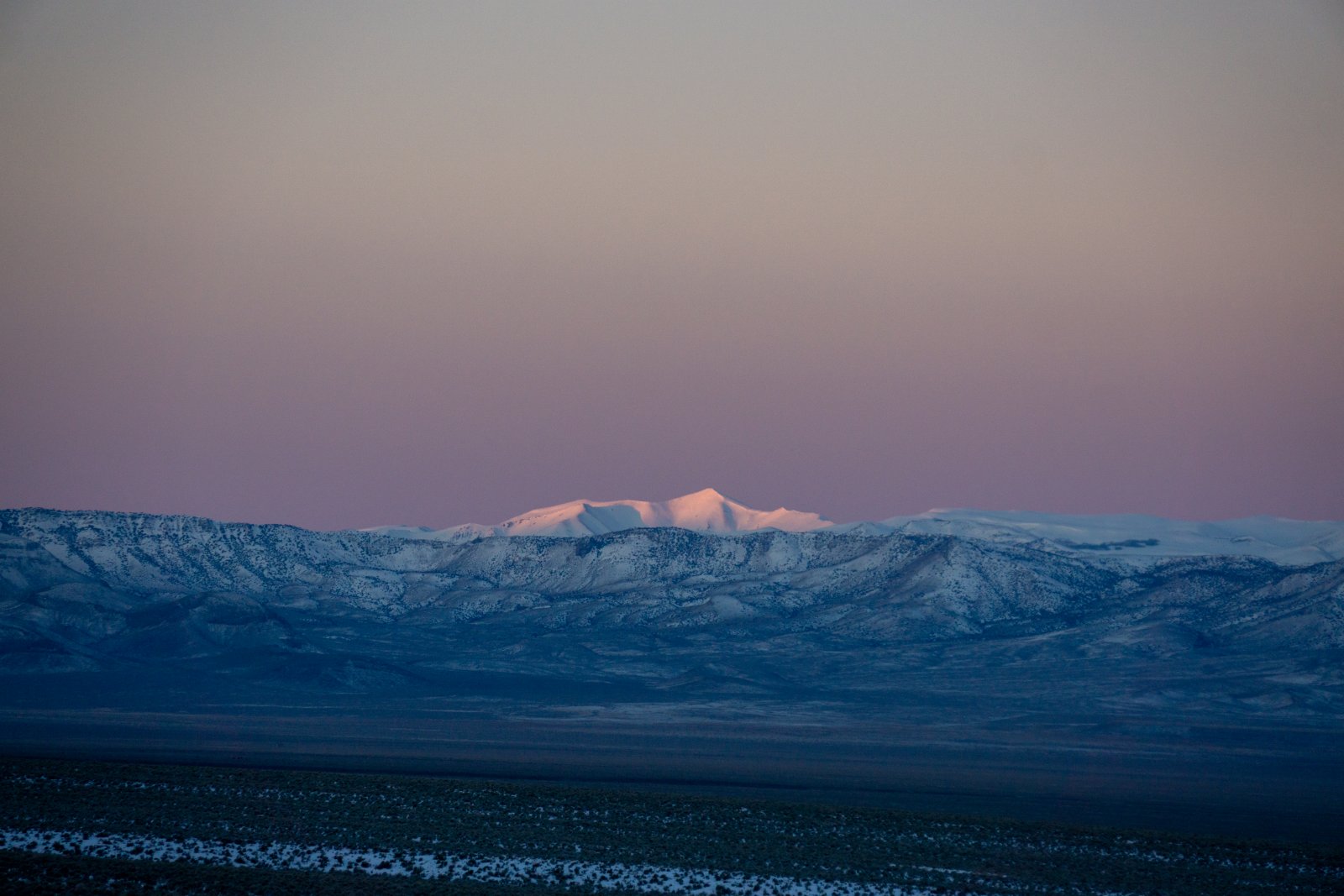
Who are your main touring partners for these objectives and what is their reaction?
I want to give a huge shoutout to Will Boyer, a local Reno shredder and one of the original off-the-beaten-path Great Basin ski maniacs. I am lucky to have a big crew of go-getter friends in Reno, but Will deserves to be noted. He maintains a great website/blog at nvbackcountry.com. From the beginning, his stories from out in the Basin helped me realize the skiing potential, the initial spark to the project. Since then, we have skied many of these peaks and lines together, and are constantly feeding off of each other’s love for the Basin experience. I think I can speak for Will when I say that he has been appreciative of the project as it complements his own desire to spend time out there on two planks in a more coordinated way.
On your site, you list the 64 peaks but openly admit that you will most likely never ski all of them due to weather and access. How does that fact play into your project and your motivation to continue? Why set a goal that is highly unlikely to be achieved?
In order to delineate the boundaries of the project, I had to choose a prominence cut-off somewhere. It was tough finding a threshold that would contain enough skiable peaks while also being a number that just makes sense. Picking 2,000' would have been silly...there are roughly 170 peaks in Nevada with over 2,000' of prominence and many of them rarely, if ever, see snow. On the other hand, if I chose 4,000' the list is dramatically reduced to just 24 peaks, and several worthy ski destinations would be left off the list (Pearl, Grafton, Granite, Ward, and more). So, I found that with a project threshold of 3,000' of prominence I wound up with a list of 64 summits, most of which receive enough snow (or have historically) to be skied. Plus, 64 is a good number, enough to occupy me for several seasons, but not so many that I feel I am never making progress.
Yes, there are a handful of peaks that may never be skiable for one of two reasons...highly restricted military access or simply not enough snow. For the first issue, I will certainly do my best to navigate the red tape necessary to ski them. Mt. Baldy, within the Nevada Test Range, is likely never a possibility. Ignoring the fact that the military literally bombs this mountain, I also believe it falls within the category of never receiving any snow. Speaking of which, yeah, unfortunately, I need snow to ski. I have gone back through years of snow data for every peak and there are a couple that concern me. However, I am not going to give up hope. You really never know out there. For some peaks, they received snow just one year out of the last 15...but that one year it built up a 40" snowpack! In the meantime, I have plenty to keep me occupied and it doesn't hurt to hold on to a little thread of optimism for the few dry ones. Maybe three decades from now I will find myself in the whiteroom on Grapevine's north face!
At the end of the day, this project is really my love letter to the Great Basin landscape. By chasing this list of prominent peaks I find myself exploring mountain ranges, valleys, and sage-covered hills I would never have imagined myself visiting, and I am all the better for it.
Anything I missed that you want to mention?
I am super fortunate in so many ways, one of which is the freedom to access such incredible terrain all throughout Nevada. There are so many folks toiling behind the scenes to foster better land protection, conservation, and public access throughout the Great Basin. If you are interested in supporting some of these efforts, please check out the work being done by the dedicated people at Friends of Nevada Wilderness.
Big thanks to everyone at Skimo for highlighting my project! It started off as little more than a personal ski journal, but now I hope I can use it to inspire others to get out in the Great Basin.
Comments









